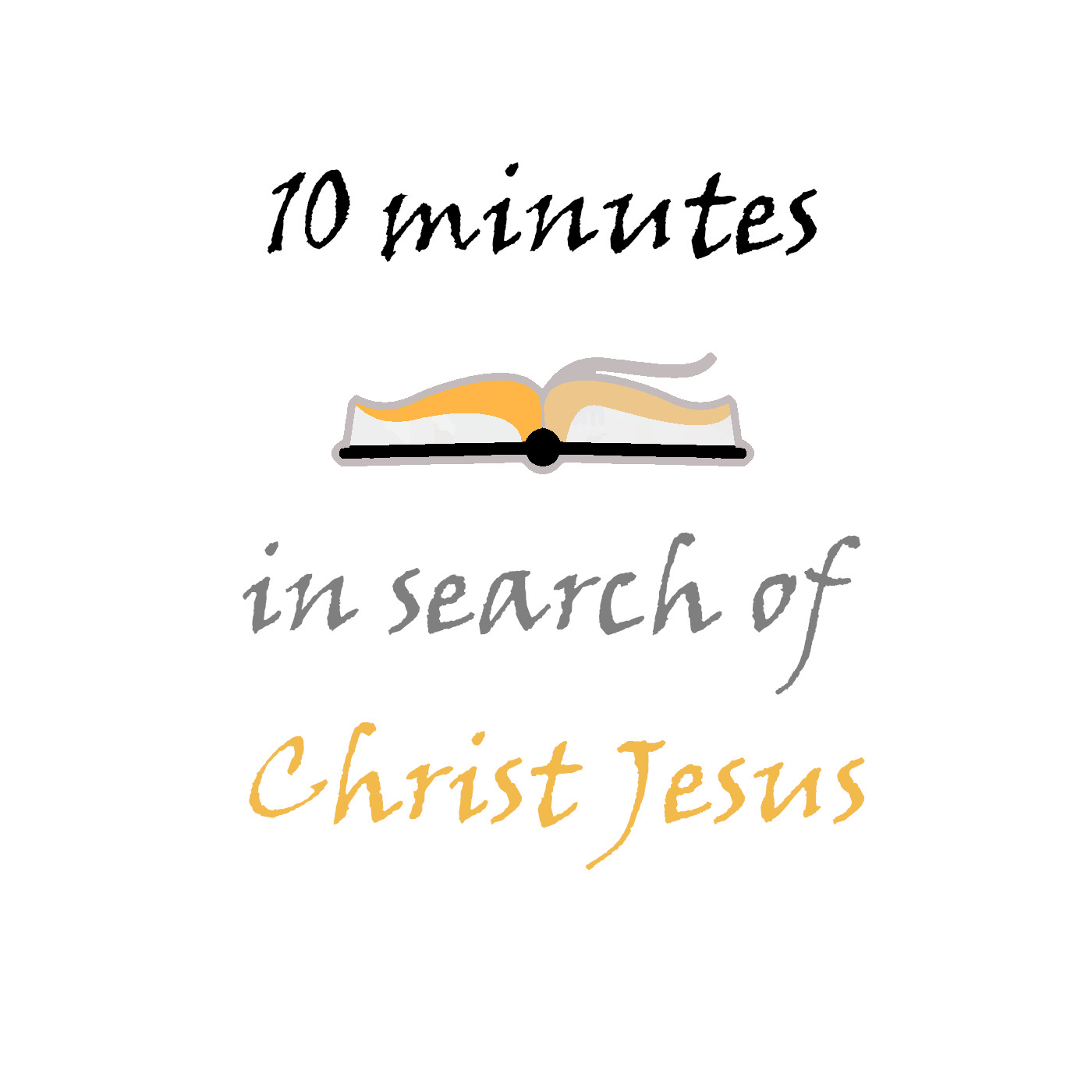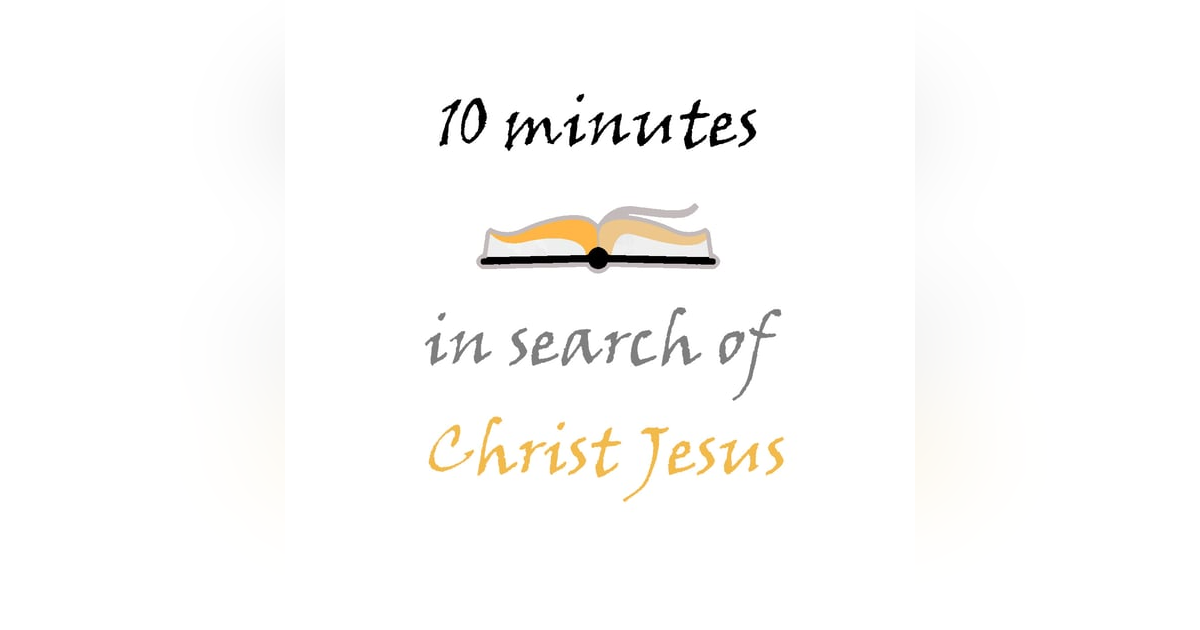

Sign up to get updates from us
By signing up, you agree to receive email from this podcast.

Wednesday, 7 September 2022
and saw heaven opened and an object like a great sheet bound at the four corners, descending to him and let down to the earth. Acts 10:11
Taken with the previous verse, the words form a complete thought – “Then he beca...

and saw heaven opened and an object like a great sheet bound at the four corners, descending to him and let down to the earth. Acts 10:11
Taken with the previous verse, the words form a complete thought – “Then he became very hungry and wanted to eat; but while they made ready, he fell into a trance 11 and saw heaven opened and an object like a great sheet bound at the four corners, descending to him and let down to the earth.” With this noted, the words can now be looked into, starting with, “and saw heaven opened.”
Rather, the first verb is present tense to more poignantly bring the reader into the narrative – “and beholds heaven opened.” It isn’t that he went into a trance and saw. He went into a trance, and he beholds. It is right there before him as he looks. While beholding this marvelous scene it next says, “and an object.”
This is all happening while he beholds. This thing, described here as an object, takes hold of his vision. The word simply means a vessel by which something is contained. In this case, the object is “like a great sheet.” The word is othoné, and it is found only here and in verse 11:5 where Peter explains to others what he saw. It is fine linen, and thus it refers to a sheet or a sail. It is a piece of linen, obviously square (as will be seen), and extremely large.
Some speculate that this may be a tallit, a fringed prayer shawl used by Jews. If it were such an item, and because Peter is a Jew, he would have certainly said so when later describing it. Rather, it appears to simply be “like” a great sheet, and thus something specifically used for this purpose. Of this object, it next says that it was “bound at the four corners.”
This now gives a better sense of what the object may be. As noted, the word used to describe it is a sheet or a sail. The Weymouth New Testament uses the word sail –
“The sky had opened to his view, and what seemed to be an enormous sail was descending, being let down to the earth by ropes at the four corners.”
This is probably what is being conveyed. Peter bar Jonah (his full name as seen in Matthew 16:17) was a fisherman and well acquainted with sailing. He had just been called from Joppa where centuries earlier Jonah had sailed aboard a ship going to Tarshish. As he was by the sea at Simon the tanner’s house (Acts 10:6), he would have daily seen ships coming and going. When describing this object in Acts 11, it would be much more normal for him to use this description with those he talked to – “I saw this thing descending like a huge sail!”
The description of it being a sail would then fit more readily with the typology of what will later be described for other reasons as well. Of this great object like a sail, it next says it was “bound at the four corners.”
The word translated as “corners” means “beginnings.” It is the very extremity of the sail, and this is what would naturally be done to a sail. The billowing square sail of a ship is what catches the wind and impels it forward as it is bound by its corners. This is just what the word was used to indicate in ancient Greek as noted by Vincent’s Word Studies –
“Dr. J. Rawson Lumby suggests that the word, ‘applied to loose, bellying sails of ships,’ may indicate that the form of vessel which appeared to Peter ‘recalled an image most familiar to his previous life - the wind-stretched canvas of the craft on the Lake of Galilee’ (‘Expositor,’ iii., 272).”
The verse finishes with the words, “descending to him and let down to the earth.” The number four in Scripture is defined by Bullinger as the number of creation. It is the world number and especially the city number. This object bound at the four corners descended down to the earth. As such, it would indicate the four corners of the earth noted elsewhere in Scripture, such as in Isaiah 11:12. It is a way of describing the totality of a location, such as a city or a country, or even the earth itself.
As this has descended from heaven, its origin is in heaven. Due to its great size and the fact that it has four corners, and that it has descended to the earth, it is emblematic of the entire earth. These things can be deduced even before the next verses are given.
As a point of interest, the word used to describe this sail has a kindred noun, othonion. That is seen in the gospels when referring to the linen strips used to wrap Jesus’ body. That word is not used, but it is an interesting connection to help understand the word that is being used by Luke.
Life application: At times, the Bible provides information in typology, metaphor, and comparison and asks us to think through what is being said. It can be an imperfect science to interpret these things, but the more we read the Bible, the more clearly such things begin to be understood.
The consistency of the Bible in its use of various literary devices, especially combined with the life or circumstances of those who are highlighted in the passages, can give us even more assurance of what is being conveyed. For example, Peter is being used to convey imagery to the church at this time. Who he is, what he did, and the surrounding passage all give us clues as to what the imagery is conveying.
From there, we can then make logical deductions about what is being expressed. In other words, read your Bible, think about what it says, and remember these things as you continue. When an interesting passage comes before you, then you can take your store of information and make such conclusions. Be careful, however, because some people can make anything mean anything by incorrectly analyzing what is being described. Don’t just jump on the first commentary’s explanation but be willing to research the matter fully in order to get the best hint of what is being expressed.
Lord God, thank You for the wonders and delights that are found in Your word. They give us a lifetime of things to study, contemplate, and consider. Someday, we long to see the word fully explained to us so that we can behold the marvel of all that it contains! Thank You for this precious gift, Your wonderful word. Amen.